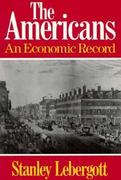Question
To answer the following questions you will need the following article (focus on the labor supply aspect you can skim/skip the impacts on family well-being):
To answer the following questions you will need the following article (focus on the labor supply aspect you can skim/skip the impacts on family well-being):
"Universal Child Care, Maternal Labor Supply, and Family WellBeing"
https://www-jstor-org.ezproxy.neu.edu/stable/pdf/10.1086/591908.pdf?refreqid=excelsior%3Aff67600d05f30ea769e93bcbc6c58b9b
1. What is the Natural Experiment? Who/What is the treatment group and who/what is the control group? (2 pts)
2. Which group of women are the authors generating labor supply elasticities for? Married? Single? All? With children? Childless? All? (1 pt)
3. Draw the budget constraint for a representative Canadian woman before the $5.00 a day policy. Assume that she has 10 hours a day to devote to work or leisure. Assume that prior to the policy change childcare cost $20 a day (as suggested by Figure 3). Assume both before and after the policy that childcare is a fixed daily cost for working women. Finally assume an hourly wage of $5.00 an hour and $30 a day in nonlabor income. On your budget constraint indicate the point that corresponds to not participating in the labor market. On your budget constraint indicate the point that corresponds to working 8 hours a day. (2 pts)
4. On the graph above, show what happens to the budget constraint following the $5 a day policy. Continue to assume that childcare is a fixed daily cost for working women. (1 pt)
5. Assume a woman was not originally participating in the labor force, what should this policy do to her labor force participation rate? Why? Be sure to address the income and/or substitution effects. Show this on the graph above with indifference curves. (2 pts)
6. Look at Figure 1 B, and use the data on this figure to estimate the impact of the free/subsidized childcare on labor force participation rates. Show your work/I am looking for a number. (1.5 pts)
7. What does the labor supply model predict should happen to hours worked for women who were previously working prior to the passage of the $5.00 a day policy? Why? Discuss and/or show a budget constraint. (1 pt)
8. According to the article, how much of the cost of subsidized childcare were covered by the change in labor force participation and the corresponding change in the tax base? (.5 pt)
Step by Step Solution
There are 3 Steps involved in it
Step: 1

Get Instant Access to Expert-Tailored Solutions
See step-by-step solutions with expert insights and AI powered tools for academic success
Step: 2

Step: 3

Ace Your Homework with AI
Get the answers you need in no time with our AI-driven, step-by-step assistance
Get Started


